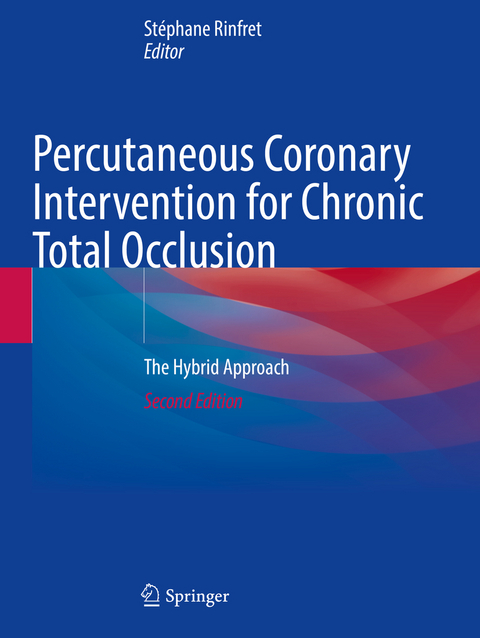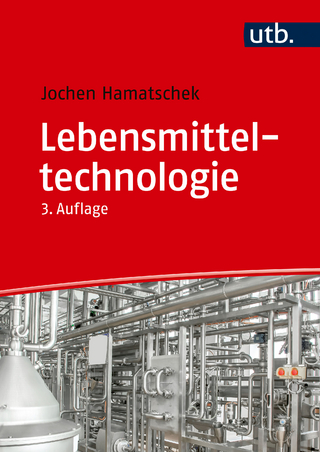
Percutaneous Coronary Intervention for Chronic Total Occlusion
Springer International Publishing (Verlag)
978-3-031-05439-6 (ISBN)
The second edition of this essential text provides readers with a detailed guide to performing various percutaneous coronary intervention (PCI) techniques for treating coronary chronic total occlusion (CTO). PCI continues to be an effective procedure to help patients with this pathology, with high success and low complications rates. Chapters feature a step-by-step approach to relevant techniques and describe their potential pitfalls, enabling the reader to develop a thorough understanding of how to perform those procedures successfully. Details of the latest methods for angiography analysis and the management of ostial CTOs, plus heavily revised chapters on topics such as contemporary device-based antegrade dissection and the retrograde approach through septal and non-septal collateral channels ensure that this Work remains the most up-to-date reference on the subject.
Percutaneous Intervention for Coronary Chronic Total Occlusion: The Hybrid Approach represents a vital reference to assist practicing and trainee interventional cardiologist in learning these techniques. Various examples are provided, with a vast selection of still images and angiographic video loops to enable the reader become confident in applying these methodologies into their day-to day clinical practice.
lt;p>Dr Stéphane Rinfret is an academic interventional cardiologist and world-renowned expert in chronic total occlusion (CTO) percutaneous coronary intervention (PCI). He completed a general and interventional cardiology fellowship at University of Montreal in 1999. He pursued a postgraduate fellowship at the Beth Israel Deaconess Medical Center and Harvard Clinical Research Institute (Harvard University), which he completed in 2001. He also obtained a Science Master's (S.M.) degree in clinical epidemiology at the Harvard School of Public Health in 2001. Dr Rinfret spent the first 7 years of his career at the University of Montreal and moved in 2008 to the Laval University-Quebec Heart and Lung Institute where he spent 7 years and performed the first retrograde CTO PCI in Canada. He moved back to Montreal in 2016 to become the Director of Interventional Cardiology at the McGill University Health Centre where he built a high-volume CTO and Complex Higher risk but Indicated Procedures (CHIP) program. He moved to the United States in 2021 after being recruited at Emory Heart and Vascular and was appointed professor of Medicine at Emory University. He has published over 160 peer-reviewed articles and has been invited over 300 times to give lectures in the past 10 years. He is a high-volume coronary operator, with procedures performed predominantly in high-risk patients turned down for Coronary Artery Bypass Grafting (CABG) or with a complex post CABG coronary anatomy. He is the founder and co-director of the Multi-Level CTO course, the largest CTO-dedicated course in Europe. Dr Rinfret serves as faculty in many important cardiology meetings, and pursues very active clinical, research, proctoring and teaching career.
1. What is what: Important Definitions in Chronic Total Occlusion Percutaneous Coronary Intervention.- 2. The Histopathology of Chronic Total Occlusion and its Impact on Mode of Treatment.- 3. Who are Best Candidates for Chronic Total Occlusion Revascularization.- 4. When, Why and How to Assess Ischemia and Viability in Patients with Chronic Total Occlusion.- 5. How to Set Up a Chronic Total Occlusion Angioplasty Program.- 6. Equipment Requirement for Chronic Total Occlusion Percutaneous Coronary Intervention.- 7. The hybrid approach and its variations for Chronic Total Occlusion Percutaneous Coronary Intervention.- 8. When, Why and How to Perform a Good Angiography Analysis Prior to CTO PCI.- 9. Specific Basic Techniques to Master in Chronic Total Occlusion Percutaneous Coronary Intervention.- 10. When, Why and How to Perform an Antegrade Approach Using a Wiring Technique.- 11. When, Why and How to Perform Wire-based antegrade Dissection and Re-entry technique. 12. When, Why and How to Perform Contemporary Device-Based Antegrade Dissection and Re-entry technique.- 13. How to Deal with Difficult Antegrade Issues.- 14. Intra-occlusion Microinjection of Contrast: When, Why and How.- 15. When, Why and How to Perform Antegrade Fenestration and Re-entry technique.- 16. When, Why and How to Perform the Retrograde Approach through Septal Collateral Channels.- 17. When, Why and How to Perform the Retrograde Approach through epicardial and non-septal collateral channels.- 18. When, Why and How to Perform the Retrograde Approach through Patent or Occluded SVGs.- 19. How to Cross the Occlusion Using a Retrograde Approach.- 20. How To Manage Ostial Chronic Right Total Occlusions and Externalization Techniques.- 21. CTO Stenting: Impact of Intraplaque and Extraplaque Strategies.- 22. When, Why and How to Recanalize In-Stent Chronic Total Occlusions.- 23. When, Why and How to Fix Common Problems Encountered in Chronic Total Occlusion Percutaneous Coronary Intervention: The Expanded Hybrid Approach.- 24. When, Why and How to Perform Subintimal Plaque Modification, Subintimal Tracking and Re-entry with Deferred Stenting for Failed Percutaneous Coronary Intervention Cases.- 25. Why IVUS when approaching a CTO?.- 26. How to Manage Calcified Chronic Total Occlusion lesions.- 27. How to Improve Catheter Support During Chronic Total Occlusion Percutaneous Coronary Intervention?.- 28. When, Why and How to Perform a Transradial Approach for Chronic Total Occlusion Percutaneous Coronary Intervention.- 30. When, Why and How to Use Left-Ventricular Assist Devices during Chronic Total Occlusion Percutaneous Coronary Intervention.- 31. Specific Considerations when Performing CTO PCI in Post CABG Patients.- 32. An Overview of Chronic Total Occlusion Percutaneous Coronary Intervention Complications.- 33. Management and Prevention of Perforations During Chronic Total Occlusion Percutaneous Coronary Intervention.- 34. How to Prevent and Manage Ischemic Complications During Chronic Total Occlusion Percutaneous Coronary Intervention.- 35. Managing Entrapped Gear During Chronic Total Occlusion Interventions.- 36. When, Why and How to Perform Robotic-Assisted Chronic Total Occlusion Percutaneous Coronary Intervention.- 37. How to Proctor New Operators to Learn Chronic Total Occlusion Percutaneous Coronary Intervention.- 38. How to Start and Build Your CTO Practice and Maintain Referrals in a Competitive Environment.
| Erscheinungsdatum | 25.11.2023 |
|---|---|
| Zusatzinfo | XVII, 373 p. 232 illus., 150 illus. in color. |
| Verlagsort | Cham |
| Sprache | englisch |
| Maße | 210 x 279 mm |
| Gewicht | 963 g |
| Themenwelt | Medizin / Pharmazie ► Medizinische Fachgebiete |
| Schlagworte | Antegrade • catheter • Chronic Total Occlusion • CTO PCI • Femoral • Interventional cardiology • PCI • Percutaneous coronary intervention |
| ISBN-10 | 3-031-05439-3 / 3031054393 |
| ISBN-13 | 978-3-031-05439-6 / 9783031054396 |
| Zustand | Neuware |
| Informationen gemäß Produktsicherheitsverordnung (GPSR) | |
| Haben Sie eine Frage zum Produkt? |
aus dem Bereich


